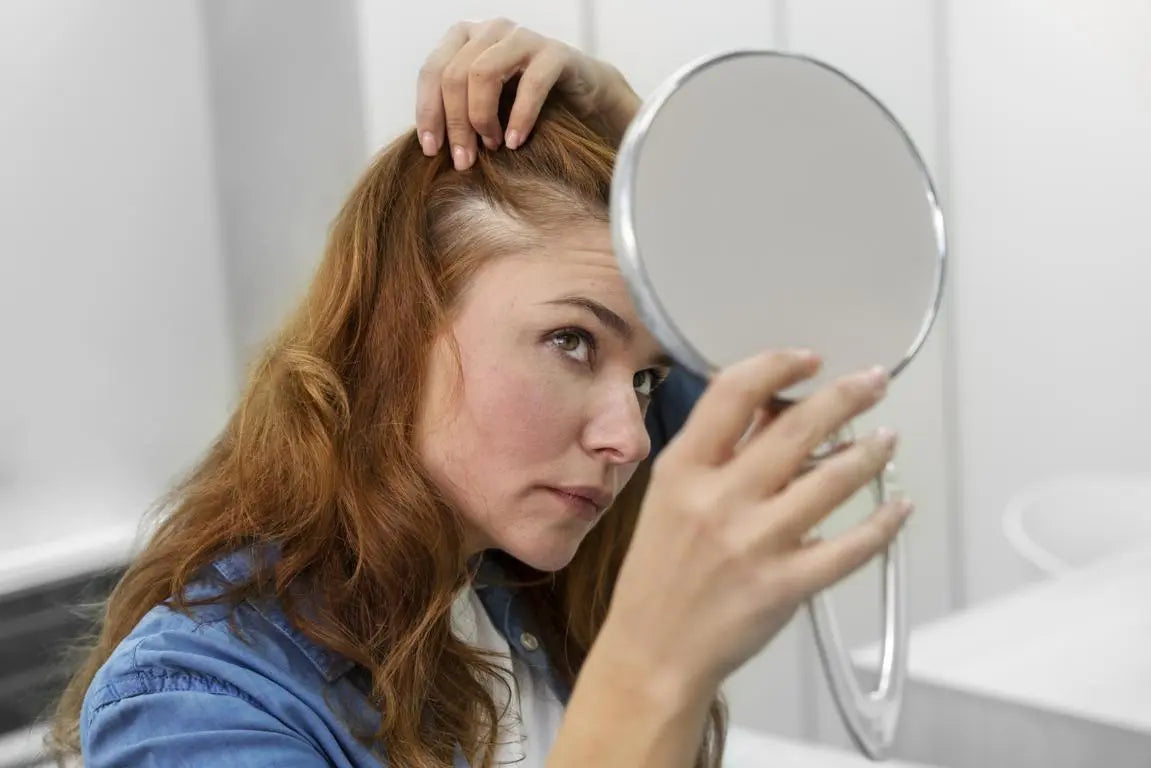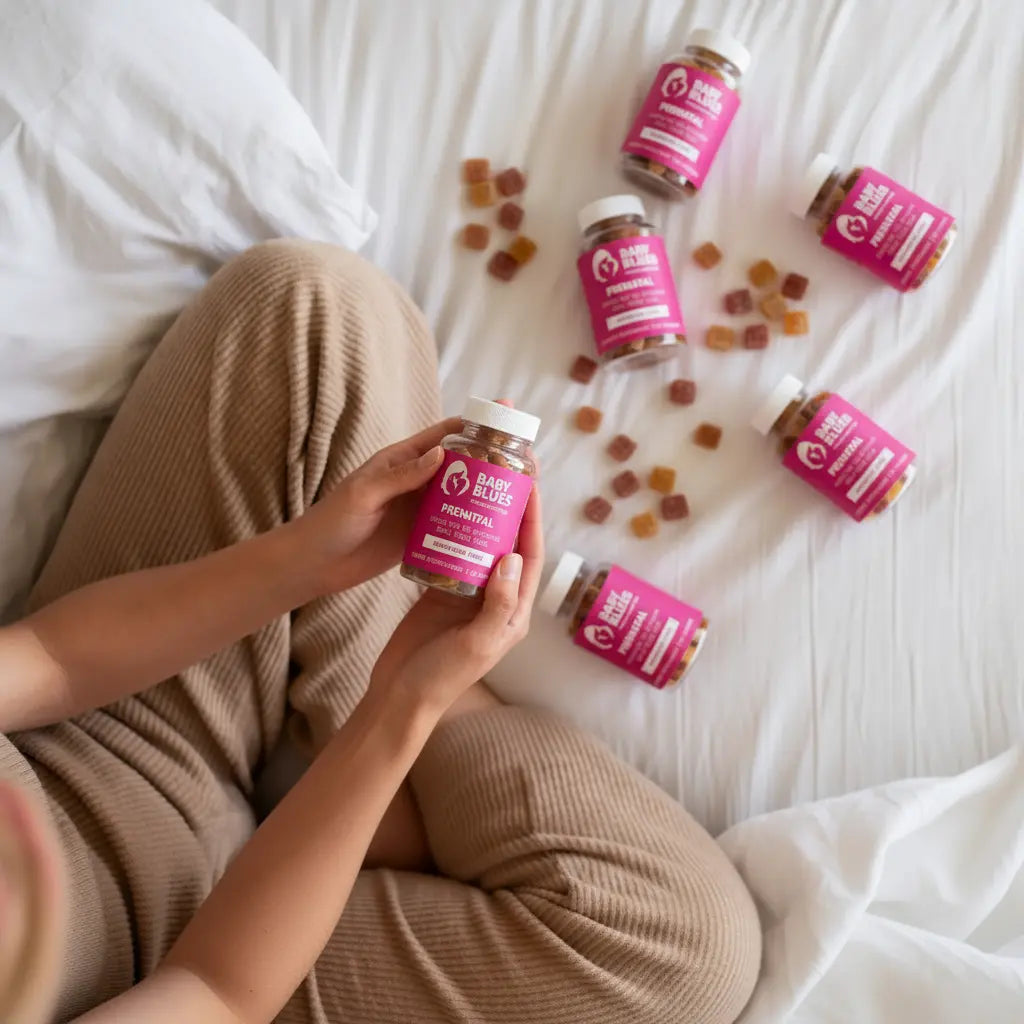The two questions I probably get asked the most in regards to my hair experience is: How do I stop hair breakage? How do I stop postpartum hair loss?
How do I know if my hair is breaking or its shedding from postpartum?
Let's just get to it, shall we?
Postpartum Hair Loss & Hair breakage often go hand and hand for several reasons which I promise to get to.
One of the most shocking comments I read is "Oh its just hormonal there's nothing you can do for the hair loss."
Sad to say, but more often than not, women who experience hair shedding postpartum are also experiencing hair breakage that actually can be prevented!
Hair Breakage:
Hair breakage is unsightly as it is annoying.
If you want healthy hair, keep in mind, the hair shaft it is dependent on a strong inner cuticle with overlapping little scales that keep your hair strands together.
Now for whatever reason, (and there can be several) the scales can start to fall apart- and strands will eventually split/separate leading to breakage, damage and commonly frizz & dryness.
Common Causes of Hair Breakage:
1. DIET:
The first major component to hair breakage is your diet. When it comes to hair (and also skin) you reflect what you eat and it shows, promise!
There are certain nutrients & minerals that will help your hair grow- and prevent breakage that was published for the National Library of Medicine.
Although linked, feel free to skip reading the review and I'll give you the cliff notes: up your zinc, iron, & folic acid. You also need adequate protein & antioxidants. If you really want to up your line of defense an help your hair growth and strength: take a hair supplement.

2. Stress:
There are a ton of studies that now link stress to hair loss & hair breakage.
Telogen effluvium - the same type of hair loss that occurs postpartum, is also a common type of alopecia that can be caused by stress and directly linked to hair damage.
In this case the stress literally makes your hair follicles go dormant- so that in the middle of a growth cycle they break off. Hair follicles in different stages other than growth can shed from the root.
Managing your stress can be directly linked to healthier hair with less breakage and shedding.
3. Dryness:
If your hair is dry, it is more likely to break.
There are many causes for dry hair so you'll want to get to the bottom of yours fast.
Consider dry weather, hot weather, low humidity. If your hair is already dry- avoid washing with hot water to further dry it out. Use a hydrating conditioner or hair mask especially on ends that feel like straw. Keep in mind that deficiencies and inadequate water intake can also lead to less healthy & dry strands to stay hydrated and support texture with a healthy diet.
For those with really dry hair (and even those with not) using silk scrunchies are a game-changer and so is a silk pillowcase!
4. Heat & Over- Processing:
I get it, I use hot tools almost daily, and to get them to give me the results I want, they need to be hot!
If you are like me and prefer your hair flat-iron smooth- just do yourself a favor and splurge for the heat protection. Non-negotiable - use heat protection EVERY TIME you style your hair.
Perms aren't as common today as they once were but these services can cause the hair cuticle to break down after a few sessions; especially if you aren't taking excellent care of your hair in between visits.
More commonly we see hair coloring making hair seem healthier after the first session or two and then really starting to take a toll.
Best recommendations: be wary of permanent hair dyes that can interact with your scalp- if you feel like you've developed any kind of contact dermatitis or reaction consider salon grade hair color or semi permanent.
When possible extend the time between your color session to 8-10 weeks. If you are going almost monthly like me- you should be using a hair mask weekly and taking your hair vitamin daily to keep strands as strong as possible.
5. Towel Drying & Brushing:

Fresh from the shower and reaching for a towel to rub all over your hair and face? STOP! That rubbing motion is super damaging to your hair, especially when its vulnerable and wet. Instead- gently blot hair and then you can wrap it in the towel to absorb the excess water while you lotion etc.
Did everyone's mom tell them to brush their hair with 100 strokes a day to keep it healthy? Come to find out in my 30's this was just a myth. In fact, now there have actually been clinical trials that have found less brushing leads to less breakage & hair fall.
I'm not telling you to avoid brushing altogether though. Good brushing habits are important so follow this rule of thumb: Use a wide tooth comb to prevent breakage and only use an actual brush when your hair is fully dry. At all costs avoid a brush with plastic bristles and choose natural bristles instead.
6. Get a trim:

I promise you, frequent hair trims will help keep your strands from splitting and help hair look & feel healthier. You have to catch split ends early, they will literally travel up the hair shaft - causing breakage higher and higher! Catching them early is the best way to avoid this and keep your hair looking fuller and healthier.
Every 8 weeks is the recommended time frame to go between trims.
Even if you are like me and growing out your hair- its best not to go beyond 2 months to minimize breakage. Your hair will actually look longer and fuller if it is healthy rather than spit because split ends look thinner and long thin hair is not it.
7. Hypothyroidism, Eating Disorders/Diet Culture, and Absorption
Feel like you've tried everything and you still can't get your hair to grow fuller or healthier without splitting and falling?
I tell women over and over again, get a blood test! Check your thyroid.
Unfortunately thyroid disorder or hypothyroidism is often over looked in women. This is when your thyroid doesn't produce enough hormones. Without these hormones your metabolism, heart rate, and your hair growth can be greatly impacted.
Women with low thyroid typically have hair damge and excess shedding. Other symptoms include low energy, feeling down, & sudden weight gain. Advocate for your health and ask your provider for a test that can really help you eliminate this as an issue or be on your way to boosting your levels.
Because hair is one of the last places in the body to receive nutrients, if you are really struggling with breakage and growth an excess of nutrition is really important.
Unfortunately, many women suffer from feeling inadequate about their bodies, especially postpartum.
Should this lead to restrictive dieting or an eating disorder this will really show in your hair.
Hair loss that occurs from dieting or a disorder tends to break off in the middle of a growth cycle. Then, hair follicles don't have enough nutrients to produce new hair so the body just stops.
This can lead to areas of no growth, and receding or thinning spots become prevalent.
Remember:
Postpartum hair loss and breakage can be really frustrating. No one likes to see hair breakage on the floor or hair loss during the shower.
Ensuring you are minimizing hair breakage from any and all of the above examples (during this period of postpartum hair loss & beyond) can lesson the breakage blow.
If you are struggling to meet your hair goals & sick of seeing hair - well... everywhere--, adding a hair supplement to bridge nutritional deficiencies can be one of the most impactful and easiest changes you can make.






